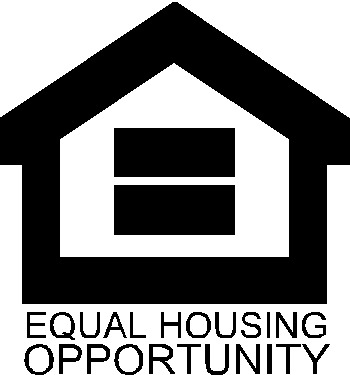.png)

Property is Power! Buy the Block! What It Means for the Black Community
Property is Power!
Buy the Block! What It Means for the Black Community
Ownership is more than personal wealth, it’s collective transformation. For generations, Black communities have been the heartbeat of American culture, resilience, and creativity, yet too often these same neighborhoods have been disinvested, undervalued, or left behind. Investing in the block isn’t just about buying property, it’s about reclaiming space, rewriting narratives, and rebuilding the foundation of economic power from within.
The Power of Ownership in Our Own Neighborhoods
When Black Americans buy homes or invest in property within their own communities, the ripple effects extend far beyond one address. Ownership creates local stability, attracts new businesses, and increases neighborhood pride. It keeps wealth circulating within the community rather than flowing out through rent, corporate ownership, or speculative investors who have no stake in the area’s future.
According to recent data from the Urban Institute, homeownership remainsthe largest contributor to wealth among Black households. Yet the racial homeownership gap hovering around 30 percentage points compared to white house holds reflects a long history of systemic exclusion. By redirecting investment back into historically Black neighborhoods, we can begin to close that gap while building community-based wealth that endures.
The Cycle of Disinvestment and How to Reverse It
Many Black neighborhoods still bear the scars of redlining, predatory lending, and decades of disinvestment. Once financial institutions and developers withdrew, property values dropped not because the community’s lacked potential, but because they were deprived of fair capital access. The result was a self-fulfilling prophecy less lending meant less development, and less development meant declining values.
But that cycle can be reversed. When Black homeowners, entrepreneurs, and investors purchase, rehab, and develop property in their own neighborhoods, they flip the script. Property improvements raise surrounding home values, small business growth attracts outside spending, and local ownership ensures that revitalization doesn’t equal displacement.
Modern Tools for Building Local Wealth
Today’s mortgage and lending landscape offers several creative pathways to invest in property beyond traditional home loans. Understanding these tools is key to transforming community investment from a dream into a movement:
- Rehab Loans: These loans, such as FHA 203(k) or Fannie Mae’s Homestyle Renovation, allow buyers to finance both the purchase and renovation of a property. They’re perfect for revitalizing older homes in need of repair helping turn neglected properties into neighborhood anchors.
- Construction Loans: For those building from the ground up, construction loans finance new developments and can later be converted to permanent mortgages. This helps entrepreneurs and small builders bring new housing and business spaces to underserved areas.
- DSCR (Debt Service Coverage Ratio) Loans: Designed for investors, DSCR loans base approval on the property’s income potential rather than personal income. This opens opportunities for multi-family, rental, or mixed-use investments in the community.
- P&L and Bank Statement Loans: Self-employed borrowers, small business owners, and gig workers many of whom are pillars of the Black economy, can qualify for mortgages using their profit and loss statements or bank deposits instead of W-2s, making access to capital more inclusive.
- Collective Ownership Models: From investment clubs to community land trusts, group ownership allows multiple people to share costs, mitigate risk, and retain control of local real estate. These models preserve affordability while ensuring that the community benefits from rising values.
Economic Empowerment Through Local Investment
Investing in the block also means investing in the people who make it thrive. Local ownership creates a multiplier effect homeowners spend at local shops, local businesses hire local talent, and tax revenue supports betterschools and services. Each transaction contributes to a stronger ecosystem of self-sufficiency.
This is how we move to sustainability when the barber owns his building,the café owner buys her building, and the family down the street renovates their home the entire community gains economic security and pride. Property ownership becomes the vehicle for both personal freedom and collective advancement.
Tips for Turning Investment into Impact
- Start Local: Look for opportunities in neighborhoods you know and understand. Familiarity reduces risk and increases your ability to spot long-term value.
- Leverage Equity: Use the equity in your current home to fund investment in other properties or community development projects.
- Collaborate: Form partnerships with trusted peers or community organizations to pool resources and scale impact.
- Learn the Lending Landscape: Connect with lenders and brokers who understand programs like FHA 203(k), DSCR, and construction loans.
- Plan for Sustainability: Focus on developments that improve quality of life not just profits such as affordable housing, mixed-use spaces, or small business hubs.
What It Means for the Black Community
Investing in the block means turning ownership into empowerment. It means ensuring that revitalization doesn’t lead to gentrification, but to regeneration by us, for us. Every rehabbed home, every locally owned business, is a declaration that Black community’s matter.
Property is Power not just because it builds wealth, but because it builds futures.
Dr.Anthony O. Kellum – CEO of Kellum Mortgage, LLC
Homeownership Advocate, Speaker, Author
NMLS# 1267030 NMLS #1567030
O:313-710-9025 W: www.KelluMortgage.com.
Property is Power! is a movement to promote home and community ownership. Studies indicate
homeownership leads to higher graduation rates, family wealth, and community involvement.
.png)



.png)
.png)
.png)